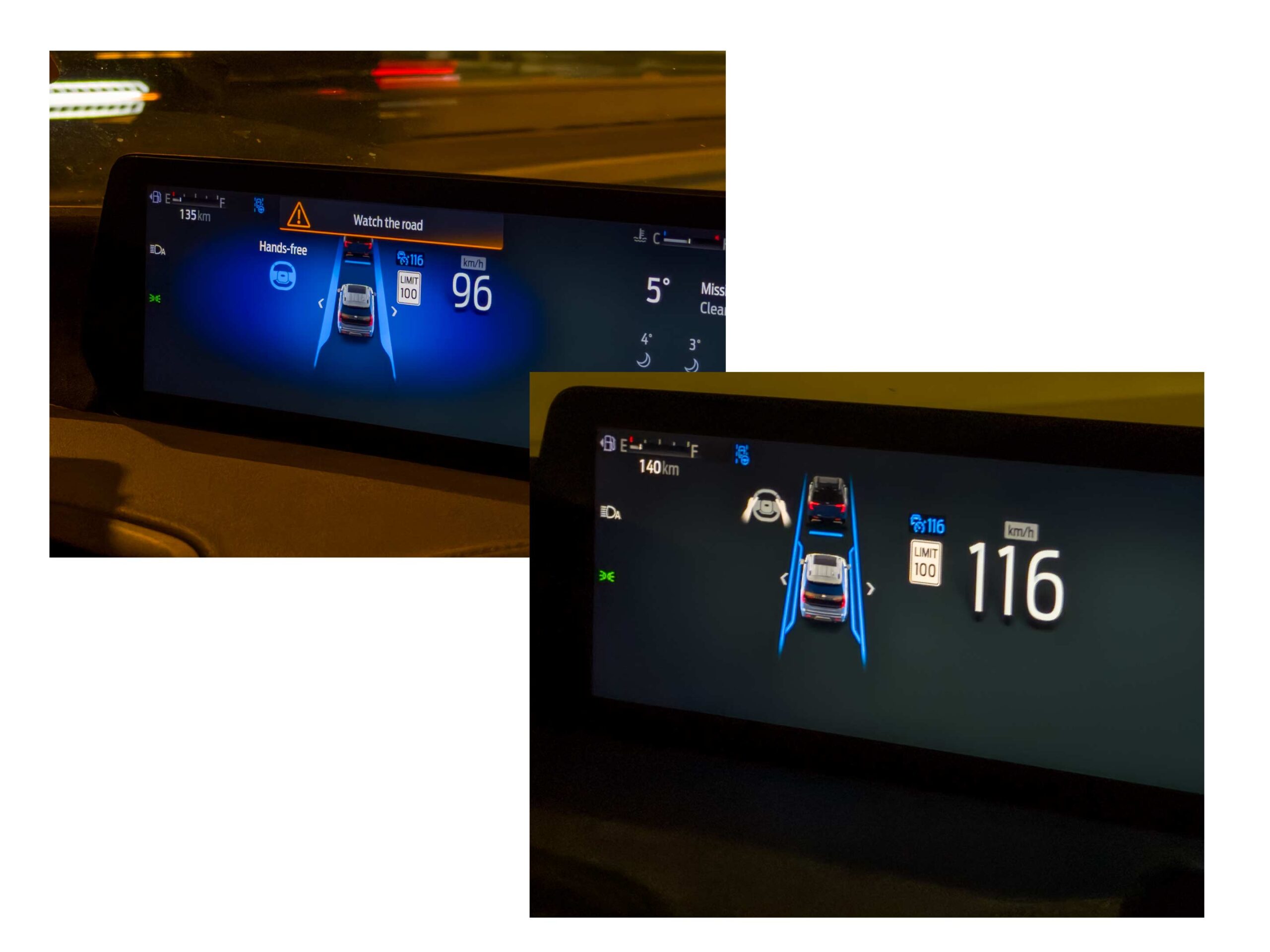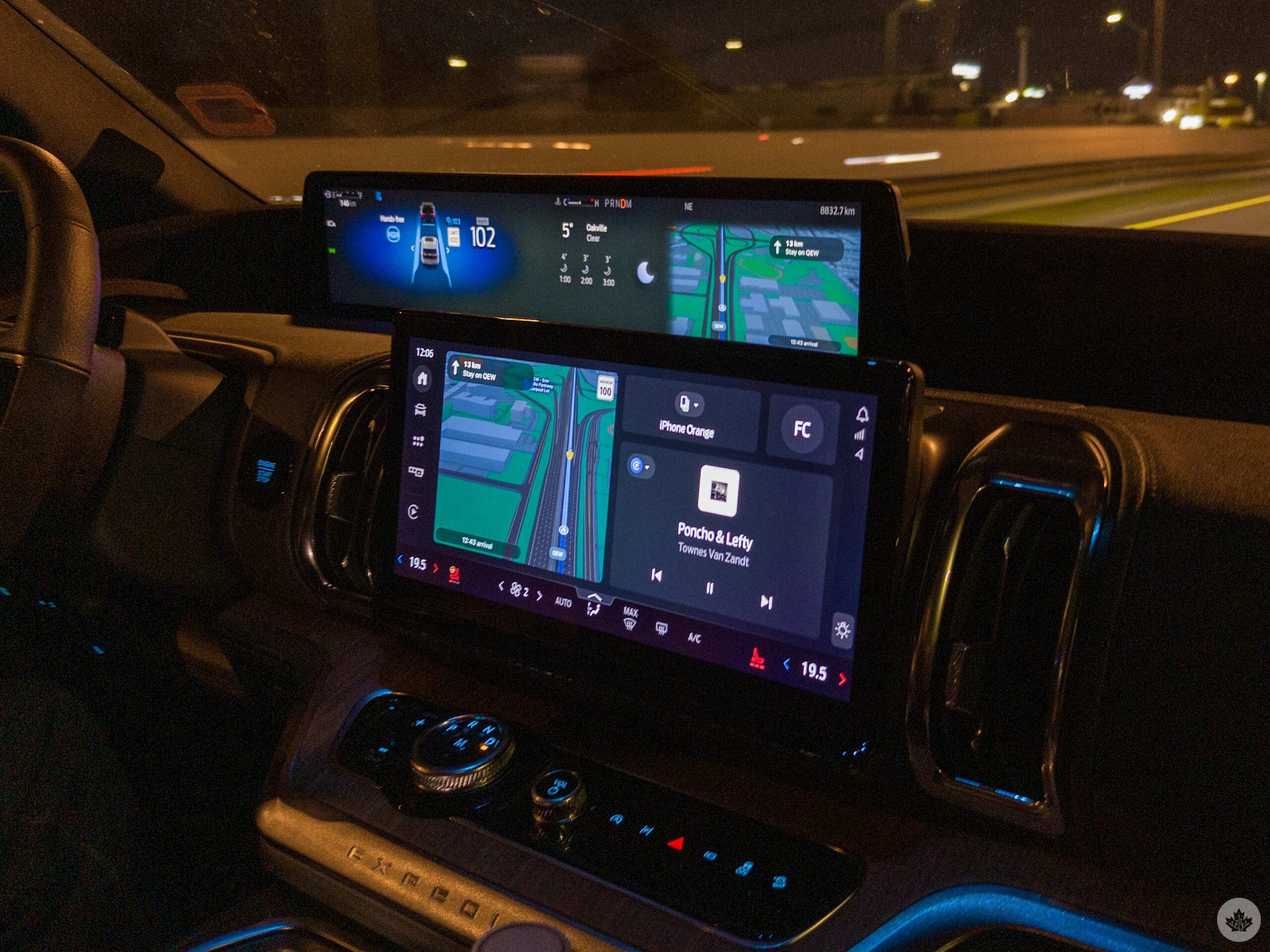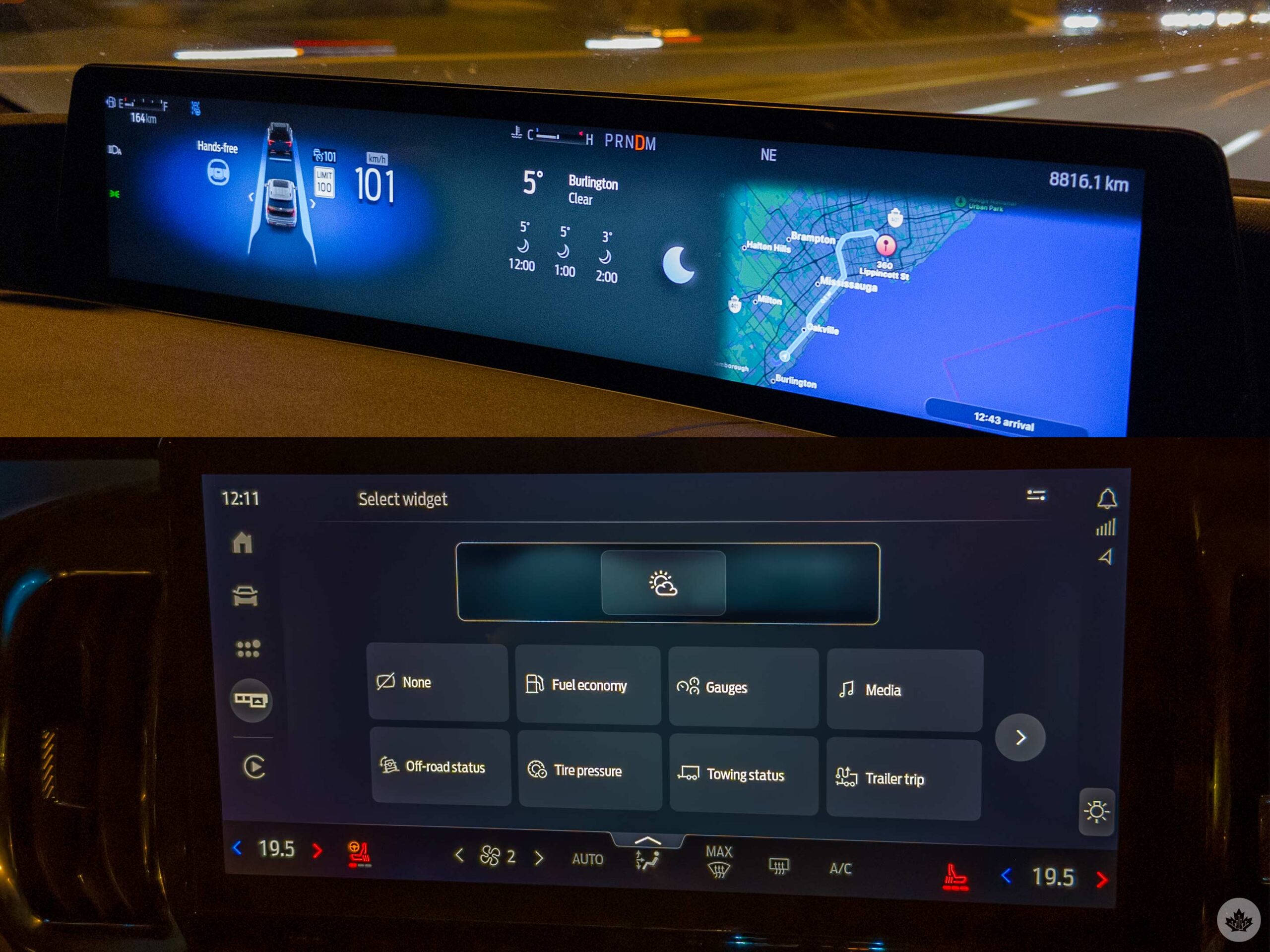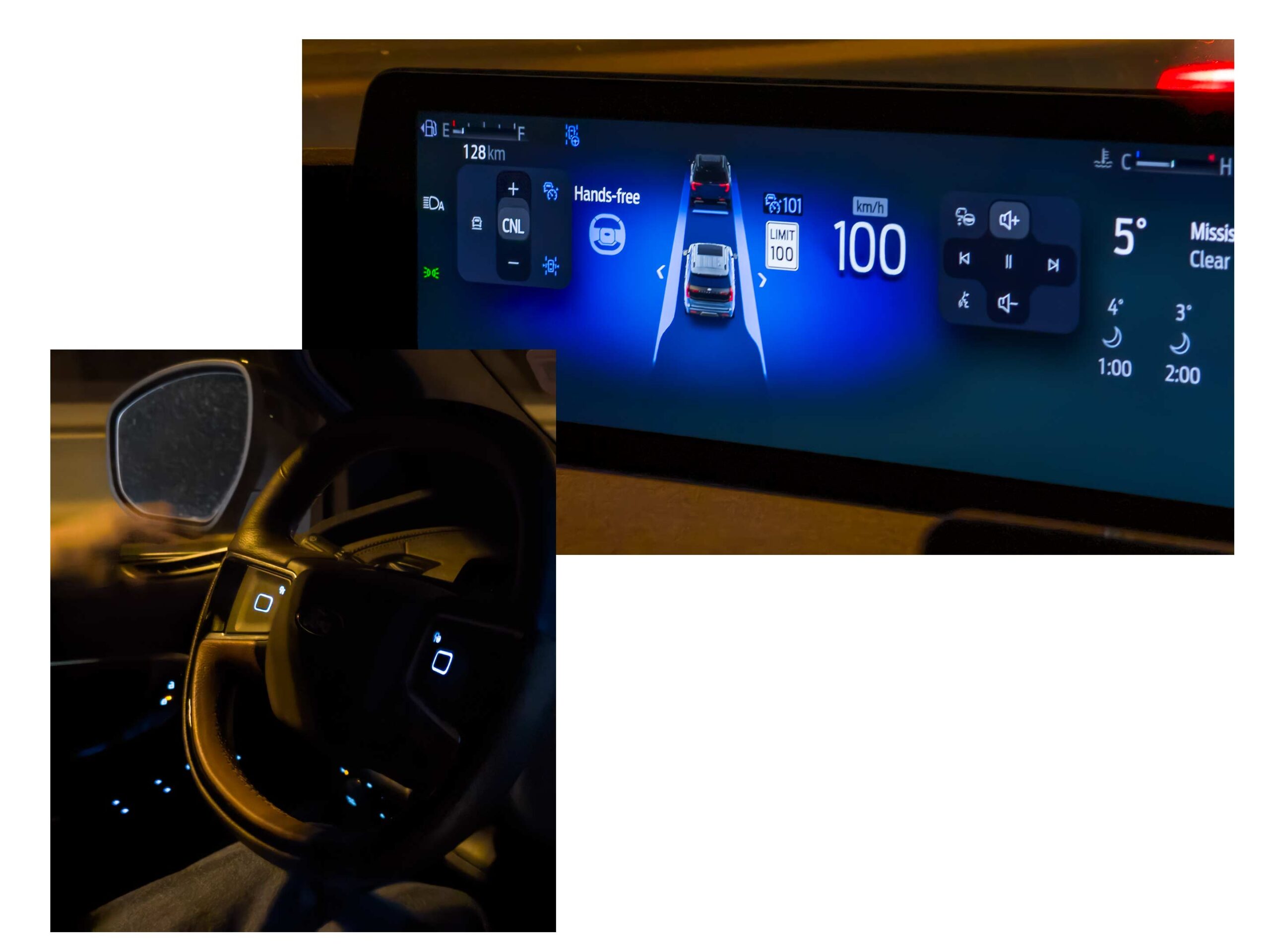Last year I took GM Super Cruise for a test drive on the long route from Toronto to Timmins, Ontario and back.. This year I followed a similar path to test Ford's Blue Cruise self-driving system. I also drove around the GTA a bit, so in total I spent about 20 hours in the driver's seat. new expedition. The SUV comes fully equipped with Ford's Blue Cruise system and the company's latest infotainment system, both of which I was very impressed with.
Driving from home to the city center was fine, except for the problems with navigation and parking the giant Expedition in the city. Once on the highway, I was able to engage Blue Cruise and the car took control for a while. The car maintained control for the most part until I reached the outskirts of the GTA, at which point its implementation of hands-free driving became less consistent.
Ford has two levels of driver assistance. The first level requires the driver to keep his hands on the steering wheel, and the second, Blue Cruise, allows you to remove your hands from the steering wheel and the car will move itself along major highways.
The first level of the system is built into the vehicle's adaptive cruise control and is part of the Co-pilot 360 2.0 system. This works quite well, but in my testing it wasn't as smart as I'd like and often broke later than a human would. It will also rush forward too quickly if the cruise is set to, say, 100 km/h, and the person in front of me, traveling at 80 km/h, then moves out of the way. In such situations, the car jumped forward with excessive vigor. It's a great thing if you love engines, and it proves that this big SUV is no slouch under the hood, but its driving style is more aggressive and you'll need to learn to compensate for that when you're behind the wheel.
When you switch to Blue Cruise, things get a little better, but many of the same problems remain. For the most part, though, it works great, moving you around with ease. The main problem is how much you can actually use it in Canada. Ford didn't map that many roads here, which means I was only able to use hands-free technology for about five hours of my 16-hour round trip to Timmins. It sounds great, but compared to its competitors it lags far behind.
Mapped Ford roads are on the left and GM roads are on the right.
This was strange to me because, as far as I understand, there is a specific car with a lot of sensors that Ford used for mapping. Ford has mapped parts of the Trans-Canada Highway and Highway 11, but it is unclear why there are so many gaps on the map. Worse, these gaps mean that Blue Cruise turns on and off every few kilometers. Even on routes that are fully displayed on Ford's website, the car still switches on and off in self-driving mode. Twice the car stopped moving on its own, so I assumed it wouldn't work on the road I was driving on; however, returning home on the same road and going the other way, it worked. This happened both on my trip north and on the main highway around Toronto.
Another area where I would like to see improvements is in the driver warning systems. When the car thinks you're not paying attention, it will start beeping, muting your music until you focus on the road or put your hand on the steering wheel. This seems like a great idea until it doesn't work too well.
For example, Co-Pilot 360 requires you to keep your hand on the steering wheel at all times to prove you're capable of taking control. However, as you may know from highway driving, there are long straight sections, meaning that although my hand is on the wheel, I'm not putting much pressure on it. The number of times this happened and then the car started beeping its horn interpreting my music was over 20 during my long drive to Timmins. This may not sound like much, but it gets annoying quickly. When I tested the GM system, its first warning was a slight vibration in the seat, which seemed like a much more elegant solution.

The top left image shows that Blue Cruise is on, along with the warning light. The bottom image shows the Co-Pilot 360 interface.
The last thing that would be a good idea to adjust is where the camera should be positioned to monitor the driver. In the model I tested, it was behind the steering wheel, which meant I couldn't use my right hand to hold the top left corner of the steering wheel, a fairly common driving position on long trips where you need to change how you hold the steering wheel every hour or so. It looks like Ford changed this on their F-150 trucks, but I haven't tested it, so while it looks better, I can't confirm whether it's better or worse.
All that aside, when you can use it, Blue Cruise is worth getting if you spend a lot of time driving on major highways. Even if it's not perfect yet, it could get much better as more roads are mapped. Plus, on a long trip like mine, even a couple of hours can really help combat driving fatigue. You can buy it for seven years for $3,295 or pay $650 per year. If you just want it for a long trip, it costs $65 per month.
Smart software design makes the machine feel smart…

While I may be a little disappointed in the breadth of self-driving systems, Ford does a lot right when it comes to infotainment systems. Like many other automakers, it's built on top of Android Automotive, but smartly and doesn't impose its design language, meaning it coexists seamlessly with Android. It's a really smart design path that puts Ford at the top of the pack when it comes to infotainment systems.
Another new feature on this car is the larger and raised digital instrument panel, allowing you to keep track of your speed, navigation and more without taking your eyes so far from the road. It's a smart system for the driver and I really liked it. That being said, I wish you could move the navigation area away from the far right of the screen and closer to the center. This is the part of the system that I needed to use the most, and it felt strange to look away from the local weather to also see when it would be my turn.

You can customize this area a bit, but it's pretty minimal and only allows you to change the weather for things like tire pressure, media playback, and a few other things. A little more adaptability would be nice here.
The only thing that's a little disappointing are the new touchpad controls on the steering wheel. Instead of actual buttons, Ford created two square touchpads with a button in the middle of each. When you swipe your finger over one of them, a menu opens on the dashboard display showing how each quadrant of the panel is currently operating. The panels themselves are responsive, but I almost always had to look at the screen longer than I wanted when I got to the button I wanted to press.

The idea is that the touchpads can adapt to suit your needs when you need them, but in my experience the left one has always been about cruise control/self-driving and the right one has mostly been for media. I wish there were dedicated buttons that I could learn to navigate by touch, instead of having to look through the menu and navigate through it every time.
Apart from that, everything else was amazing. Even the virtual climate controls were well located and easy to adjust on the fly using large buttons. You can also ask Google to set the temperature, which still takes some getting used to, but if I had a machine with a virtual assistant, I'd definitely start using it to control the temperature.

You can also use Google to send and receive text messages hands-free, and the interface has a consistent design. This even works with iPhones connected via Bluetooth. It's a smart system, and when combined with Android Auto's selection of apps (mainly Spotify and Google Maps), it gets the job done well, so you don't have to use a phone's projection system like CarPlay or Android Auto. However, Ford still allows you to use both, which is a great benefit.
Overall, there is a lot to like about this SUV on the technical side. It has a solid foundation for driver assistance and self-driving, as well as a top-notch infotainment system. While I wish the touchpads on the steering wheel were buttons, I think after a few weeks of using this car I'll get the hang of using it. If you're looking for a large SUV and infotainment is your top priority, it's hard to beat. However, from a driving and self-driving perspective, I enjoyed using the new The Escalade earlier this year is larger.
MobileSyrup may earn a commission from purchases made through our links, which helps fund the journalism we provide for free on our website. These links do not influence our editorial content. Support us Here.








